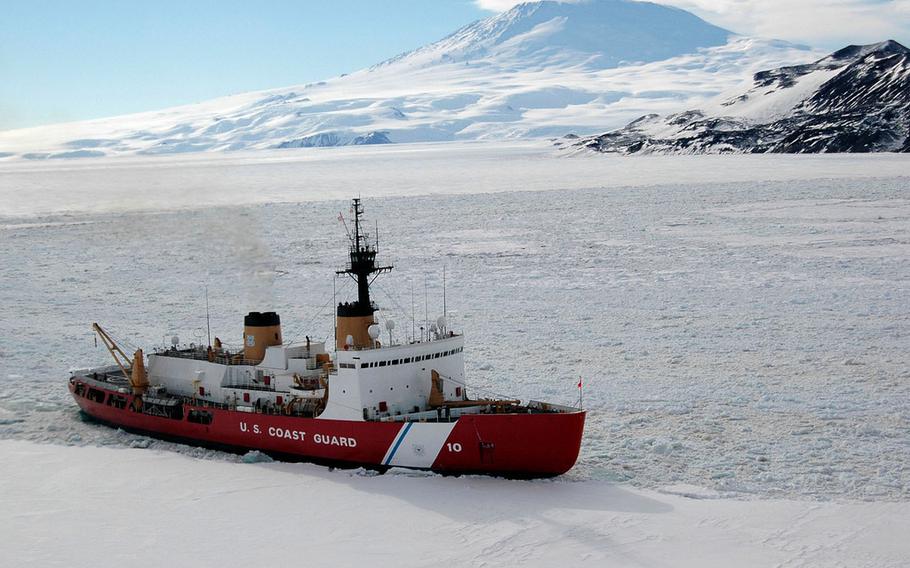
The U.S. Coast Guard’s Polar Star plows through ice in Antarctic waters, Feb. 15, 2006. (U.S. Coast Guard)
Cracks in the Antarctic ice allowed two trapped vessels to break free Tuesday night, ending the rescue mission for the U.S. Coast Guard polar icebreaker that was en route.
The USCG’s Polar Star left Sydney Jan. 5 in an effort to reach the Russian research ship Akademik Shokalskiy and the Chinese ship Xue Long.
The Akademik Shokalskiy became trapped Dec. 24 in Commonwealth Bay. The Xue Long, also an ice breaker, came to its rescue and successfully transported passengers via helicopter, but reported last week that it had also become clogged by ice.
Crew on the trapped ships heard cracks in the ice Tuesday evening and started movements to break free. A few hours later both ships reported being clear of the ice field and no longer in need of assistance.
“We are extremely pleased to learn that both the Xue Long and the Akademik Shokalskiy freed themselves from the ice,” said Vice Adm. Paul F. Zukunft, Coast Guard Pacific Area commander, in a release. “This case underscores the dynamic and harsh operating environment and the necessity for Polar Class Icebreakers in the Antarctic.”
The Polar Star will now continue with its original mission, to break a channel through the sea ice of McMurdo Sound and resupply the U.S. Antarctic Program’s base there on Ross Island, according to Polar Star Capt. George Pellissier.
The ship—the Coast Guard’s only active heavy polar ice breaker—is one of the largest in the Coast Guard and recently completed its three-year and $90 million overhaul